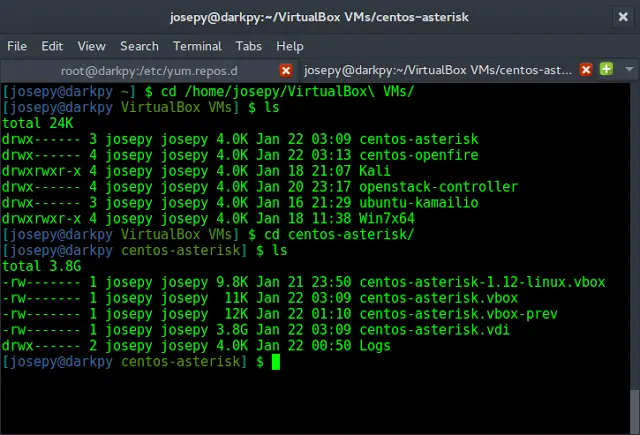Implicit functions are functions where a specific variable cannot be expressed as a function of the other variable. A function that depends on more than one variable. Implicit Differentiation helps us compute the derivative of y with respect to x without solving the given equation for y, this can be achieved by using the chain rule which helps us express y as a function of x.
Implicit Differentiation can also be used to calculate the slope of a curve, as we cannot follow the direct procedure of differentiating the function y = f(x) and putting the value of the x-coordinate of the point in dy/dx to get the slope. Instead, we will have to follow the process of implicit differentiation and solve for dy/dx.
The method of implicit differentiation used here is a general technique to find the derivatives of unknown quantities.
Example
x2y2 + xy2+ exy = abc = constant
The function above is an implicit function, we cannot express x in terms of y or y in terms of x.
Derivative of Implicit Functions
Since the functions can not be expressed in terms of one specific variable, we have to follow a different method to find the derivative of the implicit function :
While computing the derivative of the Implicit function, our aim is to solve for dy/dx or any higher-order derivatives depending on the function. To solve dy/dx in terms of x and y, we have to follow certain steps:
Steps to compute the derivative of an implicit function
- Given an implicit function with the dependent variable y and the independent variable x (or the other way around).
- Differentiate the entire equation with respect to the independent variable (it could be x or y).
- After differentiating, we need to apply the chain rule of differentiation.
- Solve the resultant equation for dy/dx (or dx/dy likewise) or differentiate again if the higher-order derivatives are needed.
“Some function of y and x equals to something else”. Knowing x does not help us compute y directly. For instance,
x2 + y2 = r2 (Implicit function)
Differentiate with respect to x:
d(x2) /dx + d(y2)/ dx = d(r2) / dxSolve each term:
Using Power Rule: d(x2) / dx = 2x
Using Chain Rule : d(y2)/ dx = 2y dydx
r2 is a constant, so its derivative is 0: d(r2)/ dx = 0
Which gives us:
2x + 2y dy/dx = 0
Collect all the dy/dx on one side
y dy/dx = −x
Solve for dy/dx:
dy/dx = −xy
Sample Problems on Derivative of Implicit Function
Example 1. Find the expression for the first derivative of the function y(x) given implicitly by the equation: x2y3 – 4y + 3x3 = 2.
Solution:
Step 1: Differentiate the given equation or function with respect to x.
x2y3 – 4y + 3x3 = 2.
d(x2y3 – 4y + 3x3) / dx = d(2) / dx
Step 2: The right-hand side’s derivative will simply be 0 since it is a constant.
The left-hand side after differentiation :
2xy3 +3x2y2 * dy/dx – 4 * dy/dx + 9x2 = 0.
Step 3: Collect the terms involving dy/dx on one side and take the remaining terms on the other side to get:
dy/dx * (3x2y2 – 4) = -9x2 – 2xy3
dy/dx = – ( 9x2 + 2xy3) / (3x2y2 – 4 )
This is the expression for the first derivative at any point on the curve. This expression also helps us compute the slope of a tangent drawn at point (x, y) to the curve.
Example 2. Find the first derivative of y, given implicitly as: y – tan-1y = x.
Solution:
d(y – tan-1y) /dx = d(x)/ dx.
dy/dx – (1/(1 + y2) * dy/dx = 1
dy/dx =1/(1 / (1–1/ (1 + y2)))
dy/dx = 1/y2 + 1
Example 3. Find dy/dx if x2y3 − xy = 10.
Solution:
2xy3 + x2. 3y2 . dy/dx – y – x . dy/dx = 0
(3x2y2 – x ) . dy/dx = y – 2xy3
dy/dx = (y – 2xy3) / (3x2y2 – x)
Example 4. Find dy/dx if y = sinx + cosy
Solution:
y – cosy = sinx
dy/dx + siny. dy/dx = cosx
dy/dx = cosx / (1 + siny)
Example 5. Find the slope of the tangent line to the curve x2+ y2= 25 at the point (3,−4).
Solution:
Note that the slope of the tangent line to a curve is the derivative, differentiate implicitly with respect to x, which yields,
2x + 2y. dy/dx = 0
dy/dx = -x/y
Hence, at (3,−4), y′ = −3/−4 = 3/4, and the tangent line has slope 3/4 at the point (3,−4).
Ready to dive in? Explore our Free Demo Content and join our DSA course, trusted by over 100,000 neveropen!




